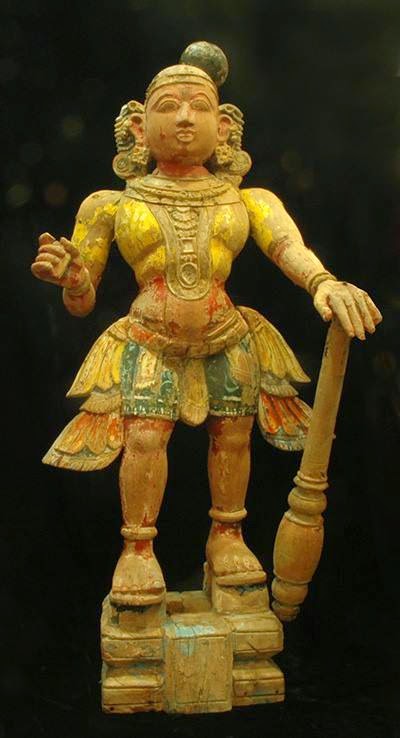If you want to shop for souveniers in Banglore, Balaji's Antiques is a great place to check out! They have some pretty awesome stuff, collected from all over South India. I loved this door guardian figure that they posted on their website.
 |
| The dhoti (loincloth) is vaguely similar to a Roman gladiators skirt, isn't it? |
Dwarapalakas (‘Guardian of the door’ traditionally appear in pairs in Hindu architecture outside the temple door or/and sanctum as gatekeepers or guardians of the deity. These guardians are fearsome warriors or giants and are often seen holding a mace, as this one is. This dwarapalaka’s tongue is sticking slightly out which is a warning mudra, ‘be careful I am here.’
Some sources believe that the Dwarapalakas represent a stage in the spiritual progress of the soul. They represent the devotee who can think of only God and no one else.
You can check out their collection here http://balajiantiques.com/










